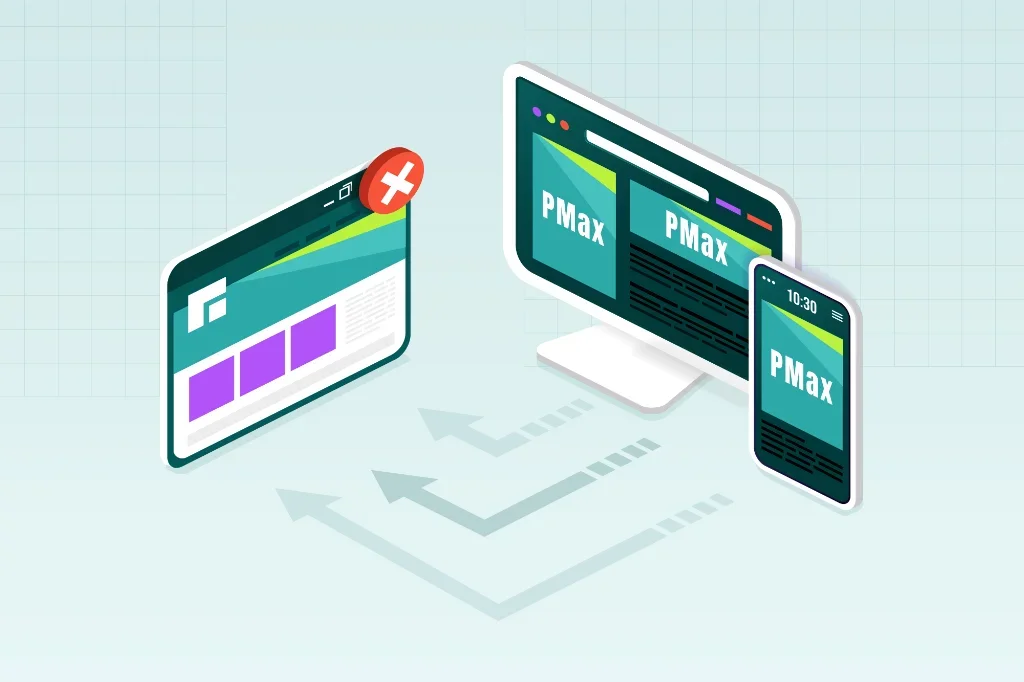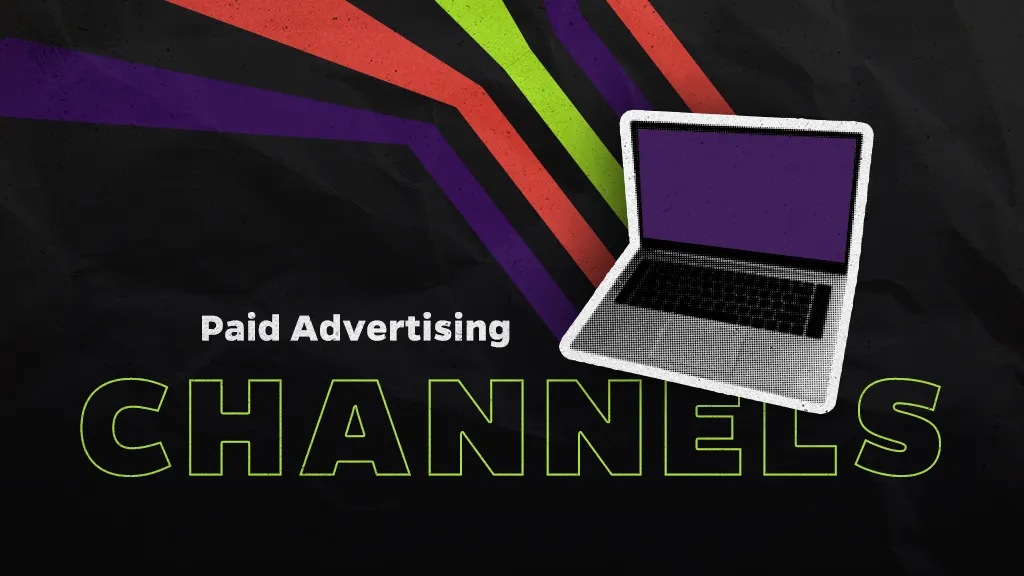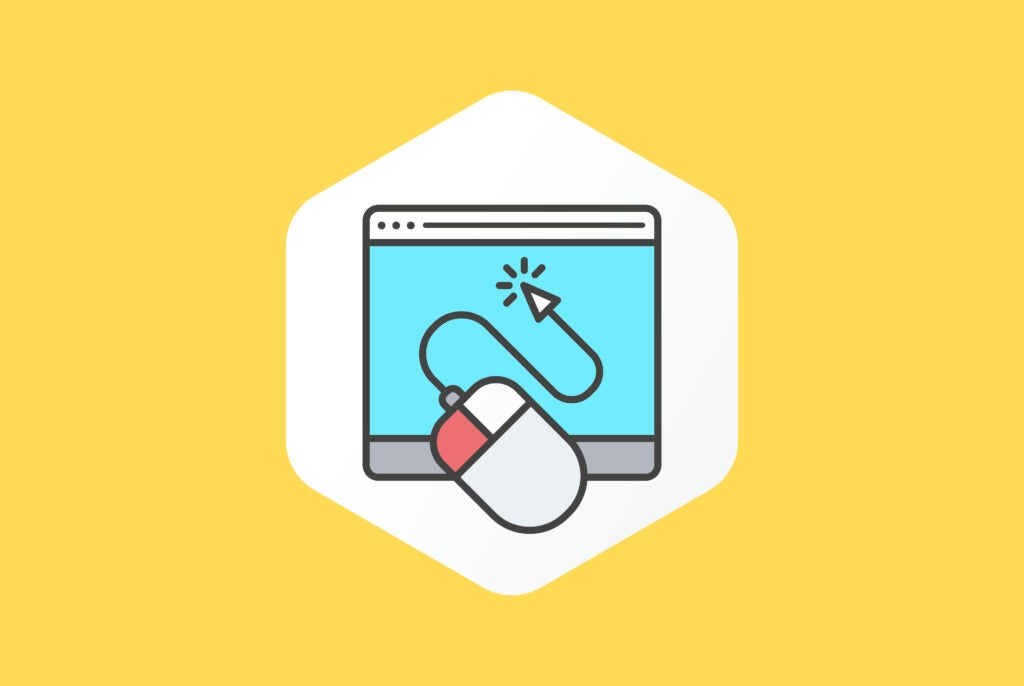The average American adult spends more than 10 hours a day on the internet browsing, paying bills, using social media, and online shopping. What does this mean for advertising companies? They have nearly half a day every day to get their name in front of potential consumers.
Digital advertising often feels like a guessing game. You’re tasked with figuring out the best strategic placements for your ads including where they’ll generate the highest ROI, who the ideal audience is, and how long to run each campaign.
For years, Google Search Ads was the go-to platform for most advertisers. But in 2021, Google changed the game with the launch of Performance Max (PMax). This new campaign type gives advertisers access to all of Google’s ad inventory — across Search, Display, YouTube, Discover, Gmail, and Maps — from a single campaign.
To better understand the impact of PMax and how it’s shaping advertising strategies, I spoke with Straight North’s Director of Paid Advertising David Ohm. He shared insights on how our team is leveraging PMax to improve lead quality for our clients and our own internal campaigns.
Understanding Performance Max (PMax)
Simply put Performance Max is Google’s AI-driven omnichannel campaign type encompasses all Google ads offerings including:
- Search (and Search Partners)
- Display
- YouTube
- Shopping
- Discover
- Maps (when applicable)
- Gmail
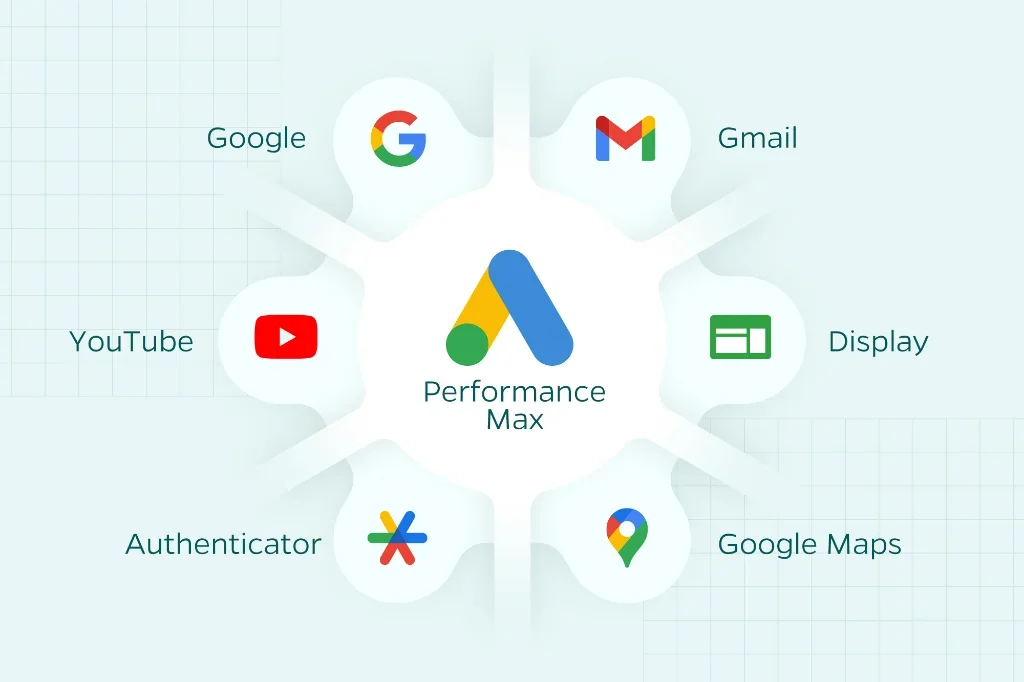
Advertisers can use it to optimize for their chosen goals, and it uses machine learning to find ideal audiences.
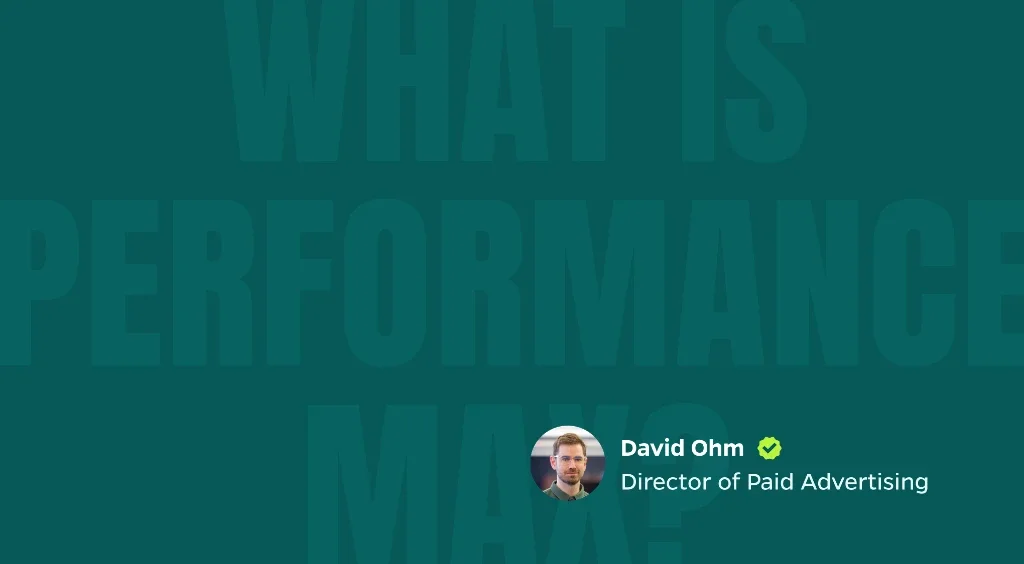
What Is Performance Max?
Performance Max was kind of an evolution of something called the Smart Campaign. And that smart campaign was basically a black box of sorts, where you’d give Google some basic inputs, a couple keywords, some ad text, maybe an image, and your website. Then, you tell Google, hey, go find me customers, essentially, across whatever network you see fit. Highly automated, very much a black box. Performance Max is kind of an evolution of that, but with more inputs, and more levers to pull.”]
PMax gives you more opportunities to get in front of more eyes with your advertising through, as David says, “one campaign, one budget, one bid strategy.” If your goal is more leads, then you can set that up in the campaign along with other levers and let it run. Google is investing heavily in PMax now over traditional campaign types. It’s more customer-centric with an integrated, consistent brand experience that looks to meet customers where they are. All channels are connected and work together.
Common Challenges for Advertisers with PMax for Lead Generation
With PMax still being relatively new, it’s crucial to set clear guardrails and understand exactly what you can control. Without them, you risk racking up clicks and impressions with little to no return.
“If you just turn PMax on, and you don’t put in any guardrails or give it proper signaling or instruction, you’re going to see some low-quality traffic. Your PMax campaign is sent down the wrong pathway, and you’re getting all these clicks and spending all this money on mobile apps or other low-quality placements that are essentially spam or uninterested users.”
Consider this scenario: you’re watching a video or playing a game on an app, and an ad pops up. You accidentally click it. You had no interest in the ad, but Google interprets that click as a signal of intent. As a result, Google begins serving that ad on that platform more frequently, assuming it’s a valuable placement. For the advertiser, they end up spending all this money in an area that’s giving them no clicks, leads, or conversions. It’s just wasted spend.
When advertisers “set and forget” Performance Max, issues often arise without proper guardrails, signals, and instructions. It tends to handle e-commerce campaigns better, because revenue tracking is straightforward. Purchases directly reflect value. For lead generation, however, where form submissions or calls vary in quality, extra setup is needed to guide PMax effectively rather than letting it run on autopilot. Overall, e-commerce sites can work a little more and be a little more sustainable than lead gen in this format.
Why Choose PMax Over Traditional Search Campaigns?
Search has been the tried-and-true method for years for launching ad campaigns. Now Google’s investment in AI and PMax is prioritizing omnichannel functionality, which is more scalable. PMax will offer you more branding and awareness and a wider variety of creative options. Here’s a breakdown comparing PMax to Search:
- Scalability: Larger reach than Search campaigns alone
- Cost Efficiency: Lower cost per click (CPC) compared to Search campaigns
- Future-Proofing: Prepares for potential future dominance of AI-driven campaigns
- Hybrid Approach: Combining Search + PMax for both control and scale
Search isn’t going away, but Google is doubling down on AI and audience-driven campaigns. The system will keep growing and changing, so it’s better to take the approach to learn it and shift with it to help your campaigns moving forward.
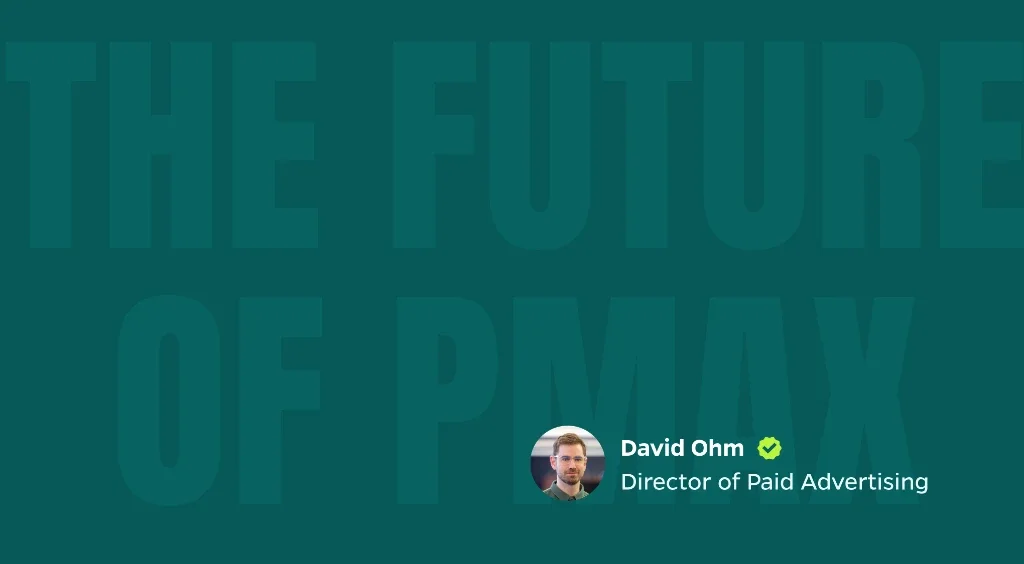
The Future of PMax
But I could see a world where, and this is speculation, but I could see a world where, Performance Max essentially completely replaces search campaigns. So we are also, in a sense, kind of future proofing ourselves here. We don’t want our clients to be in a position where whenever that day comes, if it comes, there’s this jarring transition from this hyper-controllable search campaign to this PMax campaign that we don’t understand, because we’ve just avoided it this entire time. It’s big, it’s scary, it’s a black box. And then we have to figure out all this stuff on the fly. We have to figure out how to make it work, and our business is dependent on it. So, most of our clients run search and PMax, and that’s what we’re recommending now, so we can maintain the control that we have with search. But then we get that scalability and lower cost and future proofing that we see on the Performance Max side. So we like to use both essentially, at this point.
Key Strategies to Ensure High-Quality Leads from PMax
PMax offers lead generation campaigns a powerful advantage by combining scalability, efficiency, and cost savings. Unlike Search, which is limited to one channel, PMax is omnichannel. It runs ads across display, video, Gmail, and more while almost always delivering lower cost-per-clicks. This combination means businesses can capture more leads at a lower cost while maintaining the potential for quality engagement. For most lead gen businesses seeking scalable, cost-efficient growth, PMax can supplement or even replace search as the primary driver of leads.

Ensuring High-Quality Leads
We have generic conversions, which, that’s what we set up by default. When someone fills out a form on Straight North’s website that checks as a conversion in Google Ads. But what’s more useful, you know, let’s say we, you know, if we get 50 conversions in a month, I’m making up that number, but we get 50 conversions in a month, and they’re generic conversions, we don’t really know the quality level of those. What’s far more useful to Google is if we get 15 qualified, validated leads, and we can feed that data back to Google. So we can say maybe these 50 keywords drove these 50 conversions, but there’s 3 keywords specifically that drove all of our qualified leads. We probably want the AI to look primarily at those qualified leads, because then they’re not going to go to those mobile apps or those bad places. They’re going to go to the keywords or the audience signals that drove those qualified leads. And like you said, it learns over time the more qualified lead data you give it. So it’s so much more valuable, and Google is making this a more accessible option.]
Offline conversion tracking for PMax campaigns is becoming simpler with CRM integrations like Salesforce and HubSpot, which allow marketers to track when a form submission turns into a qualified lead and link it back to the specific keywords and ads that drove it. Feeding this data into PMax is crucial because it helps Google Ads optimize toward leads that drive revenue, making lead generation campaigns more like e-commerce campaigns with clear ROI signals. In an ideal setup, every closed deal and its revenue would flow back into Google Ads, enabling marketers to set target return on ad spend goals and focus on the highest-value keywords and ads right from the start.
Though full revenue tracking is ideal, most SMBs start by simply integrating qualified lead data, as it provides a major improvement in campaign targeting and performance.
Setting Account-Level Guardrails to Prevent Low-Quality Traffic
Remember the accidental clicks on mobile apps targeting “conversions” to Google? There’s a setting in Google Ads called Content Suitability that allows you to have your ads not seen in mobile apps. Many bigger brands use this functionality to control what sites their ads appear on, which helps to stay away from unsavory content that could hurt their brand.
“This is the area of the account where we can basically tell Google, ‘Don’t go in any of these mobile app categories’, and we can eliminate somewhere between 75-95% of all the mobile app potential by just checking a few boxes in there. It’s such an easy way to avoid so much low-quality traffic without the need for additional signaling.”
You can set levels for the type of inventory you’ll allow on your site. Plus, there’s an option called “negative keywords” that you apply at the account level to avoid irrelevant search terms.
Option | Description | Reach/Quality Impact | Usage Notes |
Expanded | Shows ads across all network options. | Maximum reach, includes all placements. | Broad exposure but may include lower-quality placements. |
Standard | Shows ads on most placements while avoiding key low-quality or mature content triggers. | Balanced reach and quality. | Typically the default choice for good balance. |
Limited | Restricts ads to only the highest-quality placements. | Very limited reach, highest quality. | Rarely used because it reduces Performance Max advantages and potential reach. |
This may be lower on the priority list for SMBs, but it’s important for them to know as well. Protecting the brand and getting better traffic to your site means better overall leads. By trimming 5–10% of low-quality placements, these protections keep your lead volume steady while eliminating the parts of PMax that frustrate users the most.
In-Campaign Guardrails to Maintain Lead Quality
Set clear parameters for your PMax campaign to drive quality leads. Provide Google with audience signals — like demographics, behaviors, devices, and locations — so it can identify and target similar users effectively.
You can also use search themes, which function like broad keyword categories that guide Google on the types of searches to target, even though PMax doesn’t use traditional keywords. When combined with customer data, search themes help campaigns stay focused and reach the right audience. Marketers can create and test different asset groups (some based on customer data, others on search themes or broader audiences) to compare performance and refine targeting over time.
“The customer data and the keyword-oriented search themes, can really help direct PMax in a useful direction.”
Having qualified lead data tied to each asset group lets both Google and analysts see which groups drive the most valuable leads. This insight helps guide companies on their advertising decisions as to whether they should adjust budgets, optimize underperforming groups, or focus resources on the best-performing ones.
From Limited Levers to Greater Clarity: The PMax Evolution
Your campaign is running smoothly, but you notice some keywords aren’t bringing in the right traffic. Should you pause the campaign to make adjustments?
In a traditional search campaign, it’s simple, because you can track impressions, clicks, and conversions in detail and make changes as needed. With Performance Max, it hasn’t been that straightforward.
Historically, PMax lacked transparency, but Google is addressing this. In 2025, new tools now give advertisers access to metrics like impressions, clicks, and conversions by channel — for example, search versus display — offering more clarity into performance. While not every data point (such as cost per lead per search theme) is available yet, these updates provide brands with greater visibility and control as Google pushes for broader adoption of PMax.
As a result, optimization today isn’t about stopping your campaign to fix issues; it’s about confidently making real-time improvements while keeping things moving forward.
Key Takeaways
PMax continues to evolve, adding new features that help advertisers tailor campaigns more effectively. David notes that the Straight North team follows its own advice, using PMax as part of its broader marketing strategy because it consistently drives high-quality leads, revenue, and prospects for the business.
When developing your PMax plan, keep these strategies in mind:
- Offline Conversion Tracking: The single most impactful factor for improving lead quality.
- Strategic Guardrails: Essential at both the account and campaign levels to maintain control.
- Ongoing Learning: Important as Google continues to add transparency and optimization tools.
- Early Adoption: Critical for scalability and staying ahead as PMax capabilities expand.
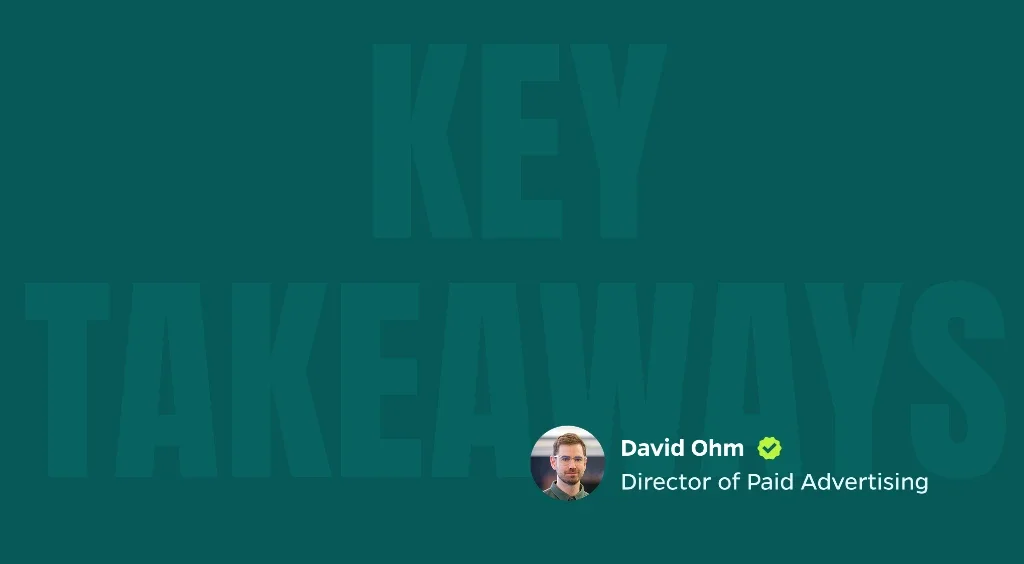
Key Takeaways
PMax isn’t going anywhere. So, we should get used to it, and we should learn to live in Google Ads world with it, versus fighting against it. And strategic guardrails, both at the account and campaign level, super important. Again, if you just turn PMax on for lead gen and expect it to work like it’s e-commerce or expect it to work like it’s just a search lead gen campaign, you’re probably gonna run into a lot of the problems we talked about up front. That happens, and then you’re going to get frustrated and never want to run it again. So get those guardrails in up front, get offline conversion tracking set up. Be strategic about it with your audiences and your search themes. And yeah, I mean, if there’s one thing to do, though, it’s that offline conversion tracking. If there’s one thing you can do to direct it with all these other things in mind, it’s the hardest thing, but it’s also the most important thing, logistically speaking.


